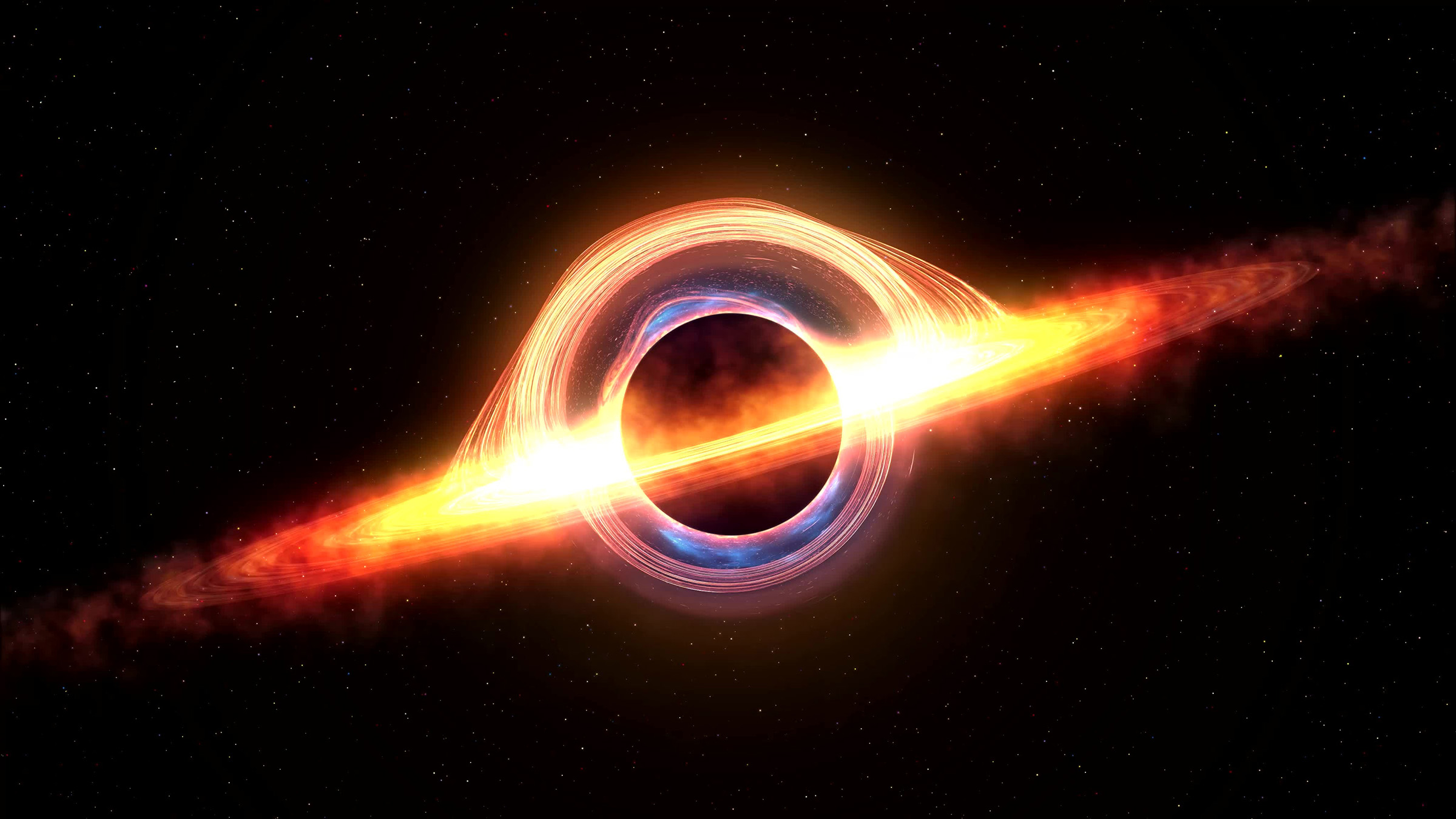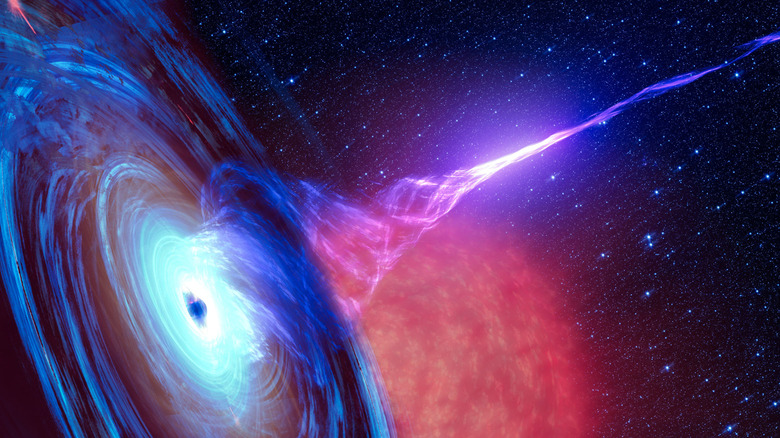Astronomers Found A 'Runaway' Black Hole As Wide As 20 Million Suns
Astronomers have discovered evidence of a runaway black hole, giving us what could be the first known evidence that supermassive black holes can be ejected from their home galaxies. The researchers publishing their findings on arXiv.org, though it has been accepted to The Astrophysical Journal Letters. According to those findings, a supermassive black hole was removed from its galaxy and is roaming interstellar space.
It's an intriguing discovery, and one that sits up there with the fact that rogue black holes exist. The discovery was made when astronomers noted a bright streak of light while observing RCP 28, a dwarf galaxy roughly 7.5 billion light-years from Earth. While watching the galaxy with Hubble, the astronomers noticed the beam of light, giving first evidence of the runaway black hole.
Further observations of the galaxy showed that the bright streak of light was roughly 200,000 light-years long. That's twice the width of our own Milky Way galaxy. The streak is believed to be comprised of compressed gas that could be actively forming new stars. Following the streak, the astronomers discovered a runaway black hole estimated to measure 20 million times the mass of the Sun.

The newly discovered black hole is currently speeding away from its home galaxy at around 3.5 million miles per hour (5.6 million km/h) – roughly 4,000 times the speed of sound. What's more intriguing, is that the streak leading from the runaway black hole leads right back to the center of the small galaxy. Of course, confirming that the streak is being left behind by a black hole was important.
Black holes often eject streams of material into space, known as astrophysical jets. These jets matched what astronomers saw in the bright streak of light, so they had to determine if that was the cause or if the streak had actually been left behind by a runaway black hole kicked from its home galaxy. The researchers say the streak didn't contain the tell-tale markers of an astrophysical jet.
One big difference is that the streak isn't getting weaker the further it moves from its home galaxy. Instead, it's actually getting stronger, giving more evidence that it could be a runaway black hole storming through interstellar space. But how does a black hole get ejected from its galaxy? The belief is that it could have been caused by a third black hole intruding into a binary system, causing one of the cosmic entities to be ejected outward.
Astronomers aren't sure how common these runaway black holes might be. Perhaps we'll find evidence of other black holes like this as we observe the universe more.
